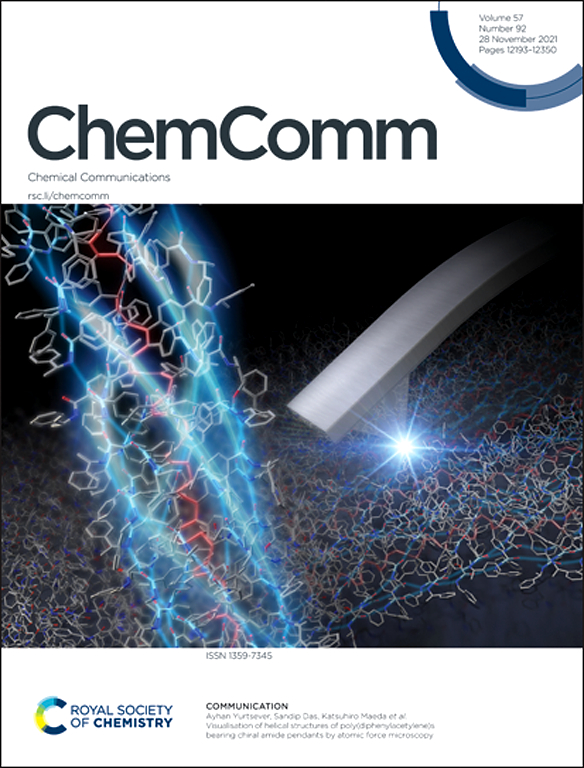A hydrophilic porphyrin-based COF to reduce CO2 and nitrite in situ for photoelectrochemical catalysis synthesis of urea
IF 4.3
2区 化学
Q2 CHEMISTRY, MULTIDISCIPLINARY
引用次数: 0
Abstract
Porphyrin-based photocatalysts exhibit superior photoelectronic properties, photothermal stability, and structural diversity. A hydrophilic covalent organic framework (COF_PP-DRS) was synthesized by linking aldolized tetrabromophenylporphyrin (PP) with dopamine(DA) and resveratrol(Res) copolymers via Schiff base reactions. It unfolded good CO2 reduction reaction (CO2RR) performance under photoelectrocatalytic (PEC) conditions, achieving a 25% higher catalytic efficiency than PP. This photocatalyst enabled urea (CO(NH2)2) synthesis from CO2 and NO2− while co-producing NH3, HCOOH, and CO. It exhibited broad pH tolerance (pH 4–10). Infrared data revealed that NO2− and CO2 adsorbed on the catalyst surface, formed *NO2 and *OCO intermediates, respectively. Sequential hydrogenation and dehydration steps yielded *NH and *CO, which coupled in situ to form CO(NH2)2. This work present a new COFs material for a green way to photoelectrocatalytic urea synthesis.以亲水性卟啉为基础的COF,原位还原CO2和亚硝酸盐,用于光化学催化合成尿素
卟啉基光催化剂具有优异的光电子性能、光热稳定性和结构多样性。以醛化四溴苯基卟啉(PP)与多巴胺(DA)、白藜芦醇(Res)为共聚物,通过席夫碱反应合成了一种亲水共价有机骨架(COF_PP-DRS)。该光催化剂在光电催化(PEC)条件下表现出良好的CO2还原反应(CO2RR)性能,催化效率比PP高25%。该光催化剂使CO2和NO2 -合成尿素(CO(NH2)2),同时共同生成NH3、HCOOH和CO。红外数据显示,NO2−和CO2吸附在催化剂表面,分别形成*NO2和*OCO中间体。依次加氢和脱水生成* nhh和*CO,两者原位偶联生成CO(NH2)2。本文提出了一种绿色光催化尿素合成的新型COFs材料。
本文章由计算机程序翻译,如有差异,请以英文原文为准。
求助全文
约1分钟内获得全文
求助全文
来源期刊

Chemical Communications
化学-化学综合
CiteScore
8.60
自引率
4.10%
发文量
2705
审稿时长
1.4 months
期刊介绍:
ChemComm (Chemical Communications) is renowned as the fastest publisher of articles providing information on new avenues of research, drawn from all the world''s major areas of chemical research.
 求助内容:
求助内容: 应助结果提醒方式:
应助结果提醒方式:


